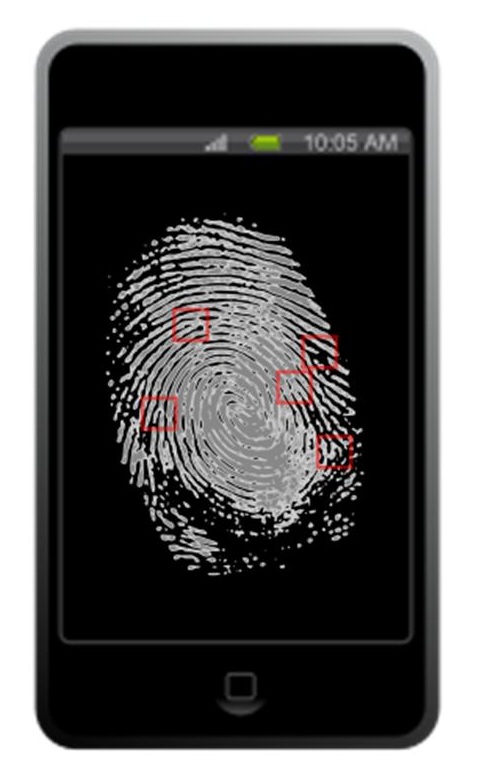This new feature has now been added to give iPhone and iPad users greater protection for their emails.
Mobile security has become a hot topic over the last while, particularly since Apple has started fighting the FBI’s demands to unlock an iPhone in a criminal investigation case, but for the rest of us, we’d still like to be able to keep our devices safe from prying eyes.
In this light, the iOS version of the Outlook mobile app now supports fingerprint scanning for added protection.
This new update from the Outlook app from Microsoft – which is one of the best loved email application for iOS devices – is now letting users take advantage of the mobile security boost available through the fingerprint scanning feature in certain iPhone and iPad models. Those compatible with this new protection feature are the ones that have an integrated Touch ID sensor. That option is available in the newest smartphone and tablet models from Apple.
Using the fingerprint scanning mobile security option is quite straightforward and easy to set up.
 To enable Touch ID protection, head to the Settings option in the mobile app and scroll down until you reach Preferences. From there, switch the toggle so that “Require Touch ID” is active. That’s it. It’s ready to be used.
To enable Touch ID protection, head to the Settings option in the mobile app and scroll down until you reach Preferences. From there, switch the toggle so that “Require Touch ID” is active. That’s it. It’s ready to be used.
From there, the next time Outlook is launched, it will require you to authenticate your identity with your fingerprint before you’ll be able to read your emails. At the moment, this Outlook protection feature is limited to devices based on Apple’s iOS. Moreover, interestingly enough, neither Gmails email app nor Apple’s own Mail app support the added fingerprint scanning protection afforded by Touch ID.
In fact, at the moment, it appears as though there may be only one other app that uses Touch ID to help to further protect emails, which is “Safe Mail for Gmail”. If there are others, they are not listed in a quick mobile app search for that feature.
As mobile security has moved into the spotlight, many are impressed with the initiative Microsoft has taken to align itself with the additional protection level for its email application.
Amazing files new patent application for facial recognition technology service
Amazon is making another move in the mobile payments space. The e-commerce company has filed a patent application for technology that will allow mobile shoppers to authenticate transactions using a photo or video of themselves. This would replace passwords, which have long been a staple in mobile transactions. Amazon believes that using facial recognition technology will make mobile commerce more secure, thereby making consumers more comfortable with the concept of using their mobile devices to make purchases.
MasterCard is also launching a service leveraging facial recognition technology
Using facial recognition technology to authenticate mobile payments is not a new idea. MasterCard is rolling out a similar system in the coming months. The service will be initially launched in the United States and several countries throughout Europe. If successful, it may be expanded into new markets. MasterCard’s service requires users to blink into the camera of their mobile device before a transaction is completed.
Biometric technology may make mobile commerce more secure
 Biometric technology is becoming very important for the mobile commerce space. This technology leverages biological information, such as a fingerprint, to authenticate a payment. Companies involved in the mobile commerce space are beginning to use this technology to make mobile transactions more secure. Using facial recognition technology is meant to have the same effect, as this technology can and has been used to make mobile devices more secure than they are currently.
Biometric technology is becoming very important for the mobile commerce space. This technology leverages biological information, such as a fingerprint, to authenticate a payment. Companies involved in the mobile commerce space are beginning to use this technology to make mobile transactions more secure. Using facial recognition technology is meant to have the same effect, as this technology can and has been used to make mobile devices more secure than they are currently.
Digital risks are becoming more apparent in the mobile commerce market, but companies are fighting back
The mobile payments field is growing quickly, but security remains one of the biggest concerns that consumers have. Mobile commerce deals in the transmission of financial information, and this information is very attractive to malicious groups. As such, they are targeting the mobile commerce space for personal gain. Companies like Amazon, however, are beginning to use new technology to fight against digital threats. This technology may help make the mobile commerce sector more secure and ensure that consumers use their mobile devices to make purchases in the future.
 To enable Touch ID protection, head to the Settings option in the mobile app and scroll down until you reach Preferences. From there, switch the toggle so that “Require Touch ID” is active. That’s it. It’s ready to be used.
To enable Touch ID protection, head to the Settings option in the mobile app and scroll down until you reach Preferences. From there, switch the toggle so that “Require Touch ID” is active. That’s it. It’s ready to be used.
 Biometric technology is becoming very important for the mobile commerce space. This technology leverages biological information, such as a fingerprint, to authenticate a payment. Companies involved in the mobile commerce space are beginning to use this technology to make mobile transactions more secure. Using facial recognition technology is meant to have the same effect, as this technology can and has been used to make mobile devices more secure than they are currently.
Biometric technology is becoming very important for the mobile commerce space. This technology leverages biological information, such as a fingerprint, to authenticate a payment. Companies involved in the mobile commerce space are beginning to use this technology to make mobile transactions more secure. Using facial recognition technology is meant to have the same effect, as this technology can and has been used to make mobile devices more secure than they are currently.